From the upcoming Corporate Sustainability Reporting Directive (CSRD) to the current energy crisis, more and more companies are facing the challenge of going beyond simply describing their sustainability goals in a strategic document, instead using an IT solution to capture them and align them with key indicators in a structured way. There are many different objectives in play (reducing carbon emissions, conserving energy, and issues of compliance, to name just a few), and there are typically a whole host of measures that go toward those aims.
I have also noticed that there is still a widespread belief at the corporate leadership level that sustainability and economic efficiency are mutually exclusive. Not only is that not correct, but the opposite is actually the case.
Defining sustainability targets
A new study by two researchers affiliated with the Technical University of Darmstadt shows that businesses that incorporate sustainability goals into their project portfolio management are not only more innovative, but also more successful in economic terms. But to get there, it is also necessary to define concrete key indicators at the strategic level to make it possible to measure the impact of individual measures on the company’s goals. After all, you can’t manage what you can’t measure, as the saying goes. For more on this, see Dr. Eric Schott's CEO blog.
That’s why I recommend getting familiar with defining sustainability targets, including measurable key indicators, as the first step.
Let me give an example: Say a company sets climate neutrality by 2030 as its goal. To be able to measure the progress made toward that goal, the company has to establish a standardized indicator. In this case, that means reducing carbon emissions. After analyzing the status quo, the company determines that it needs to conserve 10,000 tons of CO2 to achieve climate neutrality. That’s the key indicator for this sustainability target.
All of the sustainability targets can be formulated like this, and a uniform KPI register can help make them measurable in a standardized way.
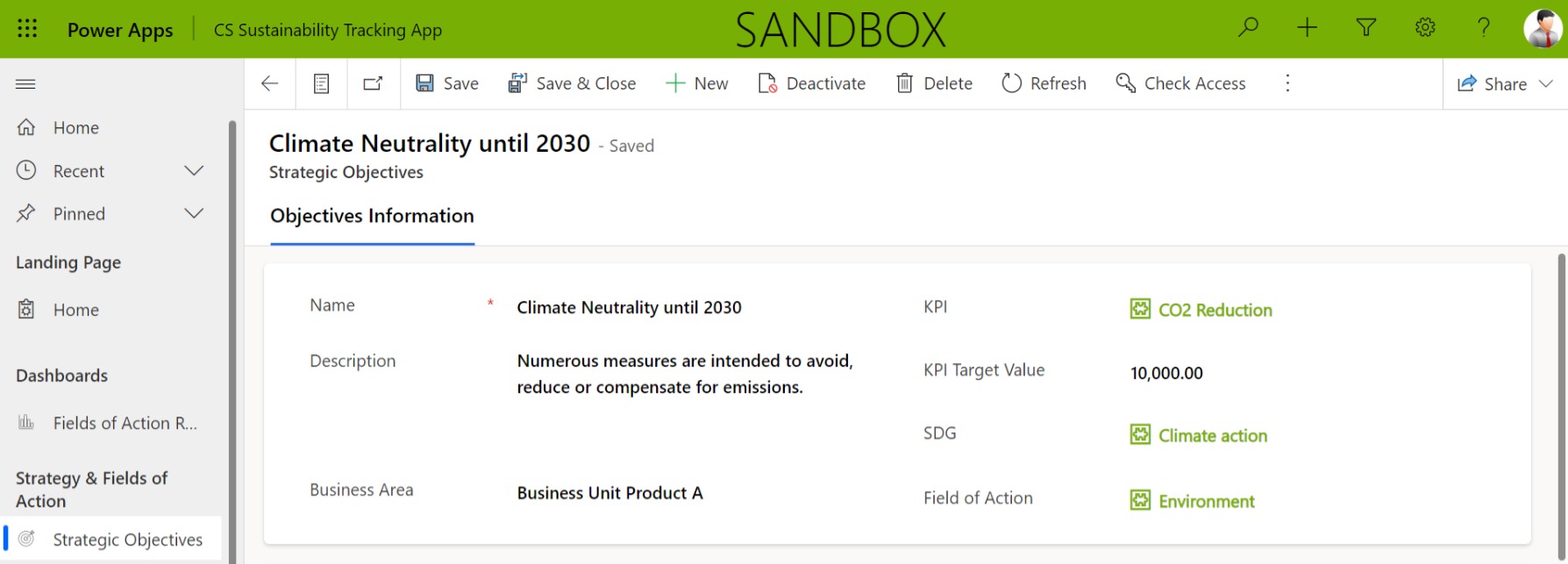
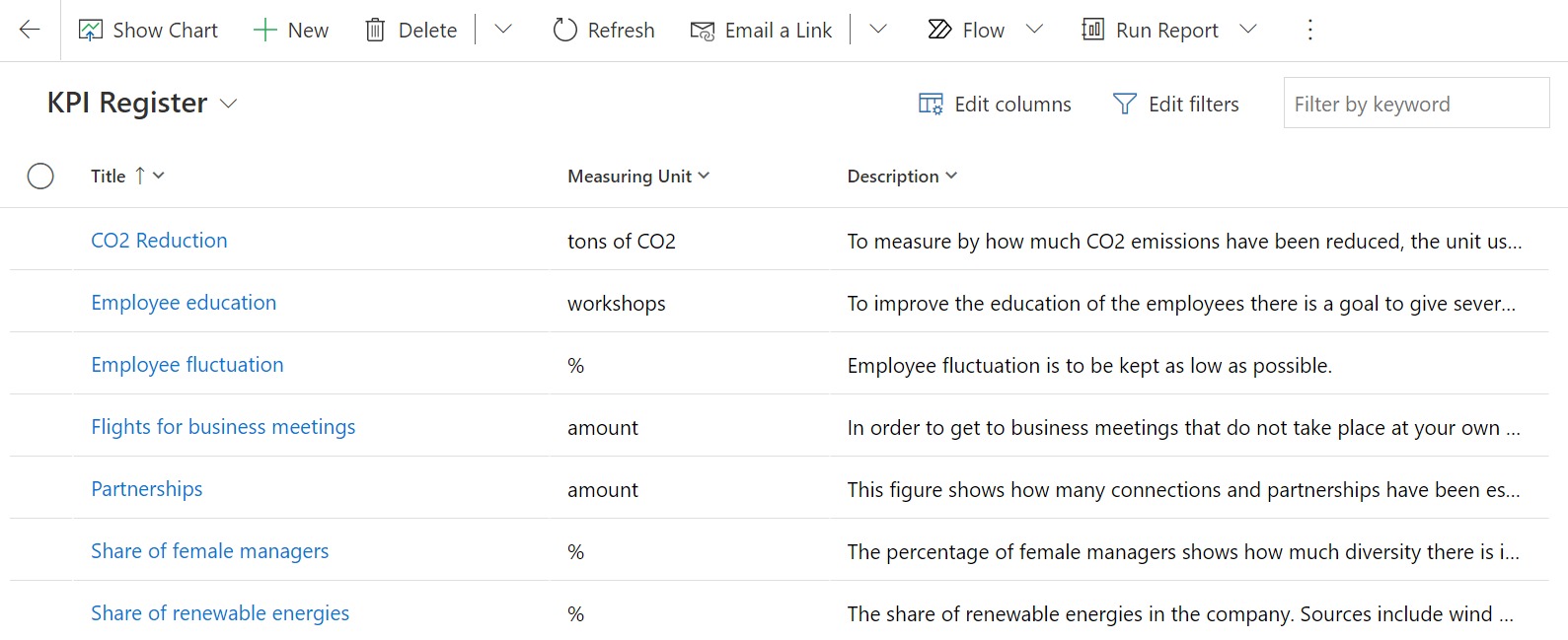
Transparency across the sustainability portfolio
The good news is that many companies are already planning to take action in the area of sustainability, and some are even in the process of implementing those steps. But I am also seeing a large number that are having trouble keeping track of the sustainability measures they have in progress. Those companies are lacking transparency, which is an issue because transparency itself is a key success factor when it comes to managing measures and identifying synergies between multiple actions all geared toward sustainability, especially at companies that operate in more than one region.
The CS Sustainability Tracking App provides a way to gather data on sustainability measures systematically and track their progress on an ongoing basis. Managers can see at a glance which measures contribute to which goals and what their status is. Various details can be adjusted as needed. Using a system that involves degrees of implementation makes it possible to divide the measures into different phases. This makes progress on the project comparable and allows for continuous tracking of the status of realization. Alongside general information on the measure itself, key financial indicators can be pinpointed, and further sustainability frameworks integrated. These measures can be assessed based on how they affect the Sustainable Development Goals (SDGs), for example.
In technological terms, the CS Sustainability Tracking App is based on the Microsoft Power Platform. This low-code/no-code platform has some major advantages, including its great flexibility and adaptability. Companies can use interlocking building blocks to include and remove features themselves and design everything individually according to their wishes. What’s more, they can do all this without advanced programming skills. The whole thing takes place almost entirely on the basis of configuration. This “citizen developer” principle makes it possible to implement change requests live in just a short time and with little effort involved. And that, in turn, has a positive impact on user acceptance. Examples of the expansion of the sustainability framework in the app include adding further ESG factors or individualizing the reporting structure by adding different KPI analyses.
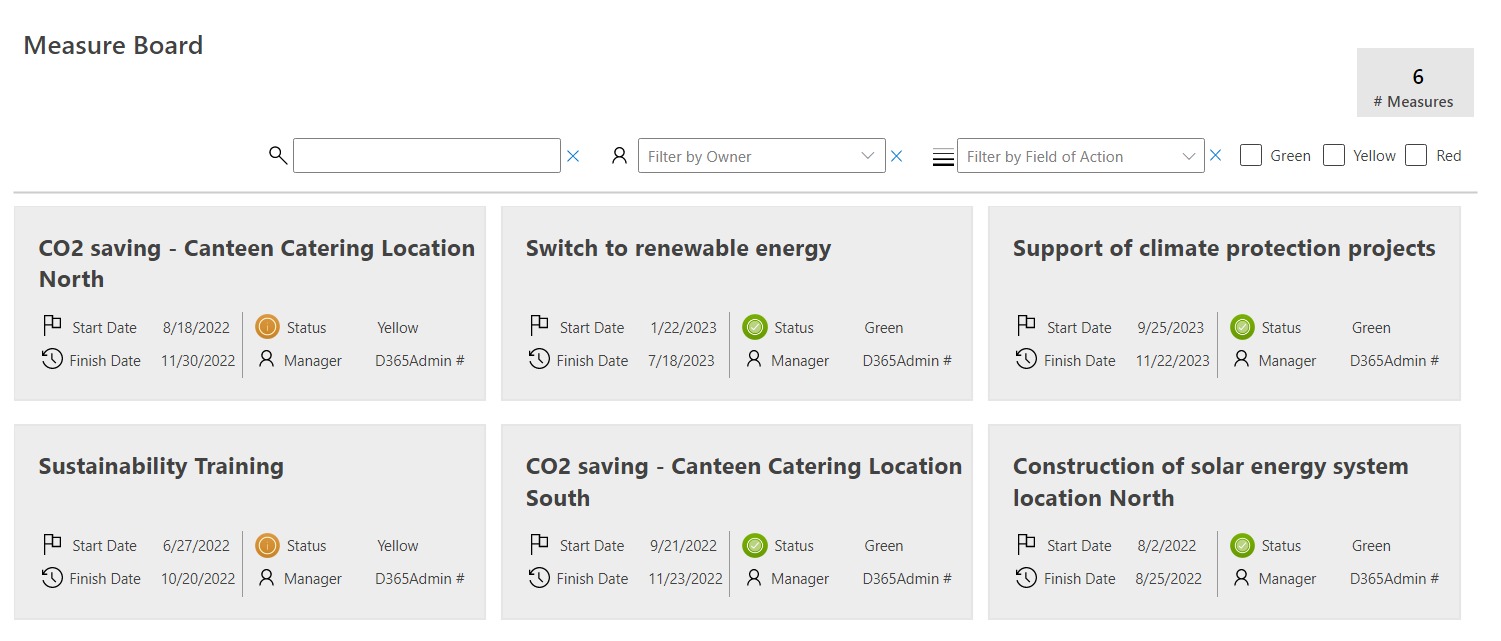
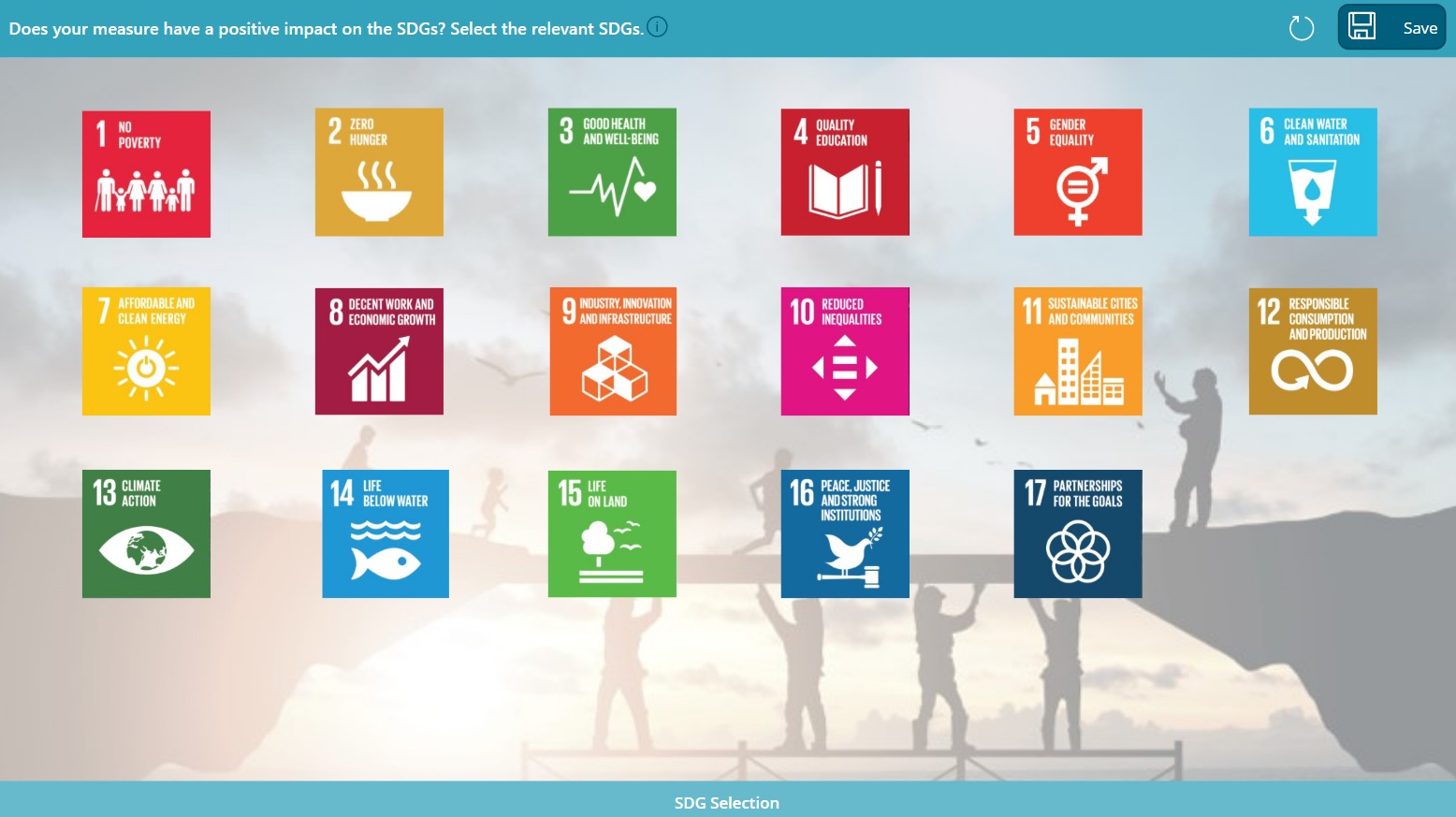
Effective steering of measures through impact tracking
Another factor that is still a headache for many companies is the issue of the actual impact of individual measures. What concrete benefit do your measures deliver in relation to your strategic sustainability targets? The answer can help you prioritize your measures while also keeping within budgetary and other resource constraints.
An integrated KPI tracking board in the app allows managers to see the current progress of the measures and make adjustments where necessary at all times. Plus, using concrete key indicators makes it possible to measure the individual measure’s actual impact on one or more sustainability targets. The Sustainability Dashboard divides the measures into action fields and provides an even better overview through thematic clusters. The current degree of achievement of each sustainability target is displayed, and the benefit of individual measures is made transparent.
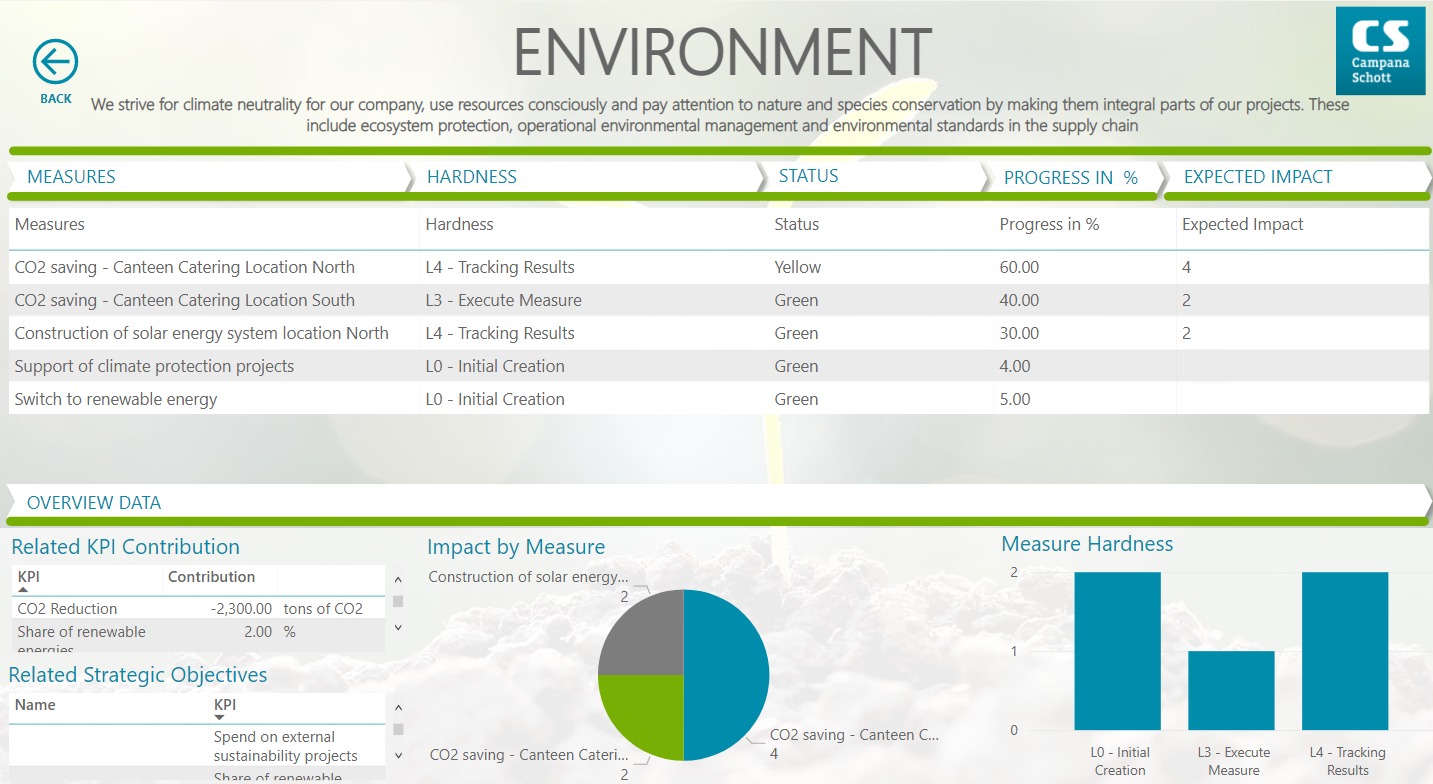
With the effects of individual measures on sustainability factors taken into account, companies can manage the achievement of company-wide and strategic sustainability targets. The CS Sustainability Tracking App helps by supporting decision makers in
- defining sustainability goals,
- systematically and transparently collecting information on suitable measures, and
- tracking the achievement of targets through ongoing measures on a continuous basis.
Communities and policymakers are increasingly pushing for greater sustainability in business, social justice, and adjustment to climate change. This means the logical next step for companies should be to get to work and work to organize their sustainability targets and actions.


